The uneven distribution of fast chargers for electric cars in Britain is exposed
The Orkney Islands have only a few hundred electric vehicle owners, but have the second highest concentration of fast EV chargers anywhere in Britain, according to analysis of official figures.
Despite only having a population of 22,000, electric car owners already have access to 15 public fast chargers on the inhabited islands, according to data from the Department for Transport.
By comparison, there are only three fast charging devices available in Leicester, home to over 350,000 residents and nearly 2,500 EV drivers.
Such a lack of consistency will frustrate EV owners, especially those who live in rampless homes and rely on the availability of public appliances, and make it difficult for the government to convince motorists who have not yet switched to consider an electric car.
Britain’s uneven distribution of EV chargers exposed: The Orkneys have more public fast charging points for electric cars than Leicester, a new analysis finds (Photo: EV charging point in Stromness, Orkney Islands)
LeaseLoco, the car leasing comparison site that analyzed DfT figures on the number of public charging points in July, highlighted the huge differences in available charging infrastructure by pointing out that it only takes about 45 minutes to drive around mainland Orkney. yet it has a higher density of fast chargers than virtually anywhere else in Britain.
The City of London (81.2 devices per 100,000 residents) is the only local authority with a higher density of fast chargers than the Orkneys (66.5 devices per 100,000), it found.
And this is just the tip of the iceberg when it comes to the huge disparity in terms of the proliferation of fast and ultra-fast chargers across the UK charging network.
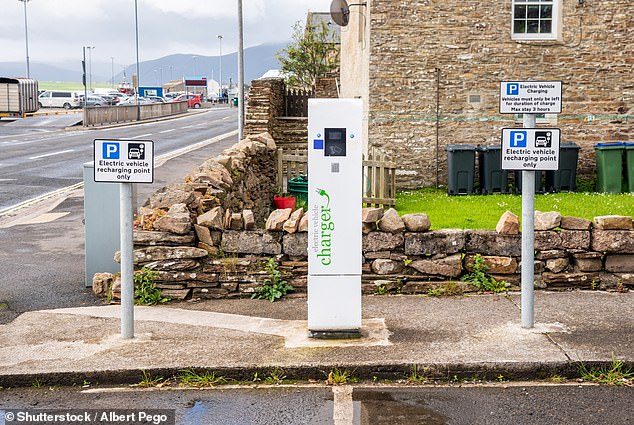
Despite only having a population of 22,000, electric car owners already have access to 15 public fast chargers on the inhabited islands, according to data from the Department for Transport (pictured, one of two charging points in the Ferry Road car park on the Orkney -Islands)
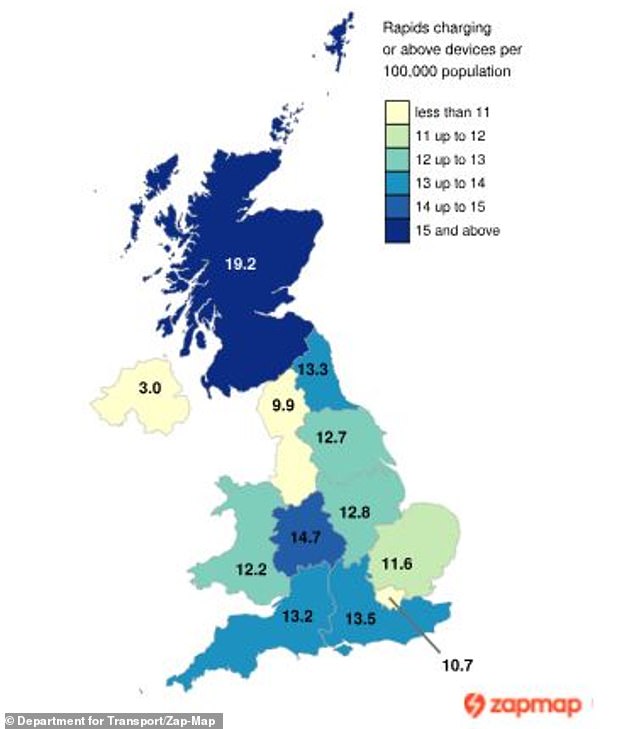
DfT’s own data shows the disparity in fast charging device availability across the country, with Wales and the North West of England being undersupplied compared to the rest of Britain
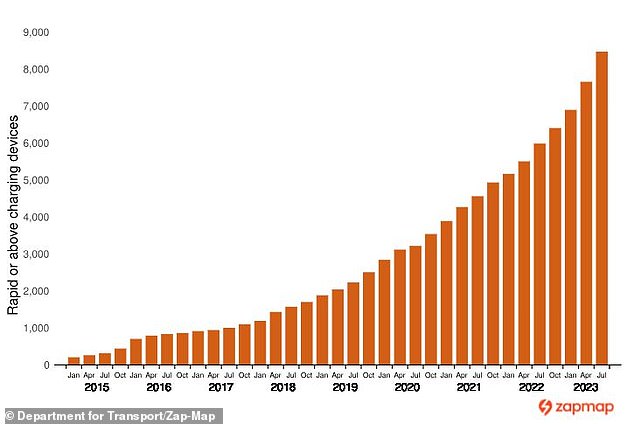
Data from July shows there are just 8,461 public fast (25kW to 99kW) and ultra-fast (100kW and above) charging devices in Britain, with the number of chargers gradually increasing
Currently, there are only 8,461 public fast (25kW to 99kW) and ultra-fast (100kW and above) charging devices in the UK, according to DfT data from EV charging site Zap-Map.
The fastest of these can charge an electric car battery from 20 to 80 percent in about half an hour.
Experts within the EV industry say these are the devices most needed across the country to enable hassle-free long-haul travel in EVs without the impracticality of waiting hours to charge.
DfT data shows Milton Keynes (151) has more fast charging devices outside London than any other town or city in Britain.
Birmingham is second with 141 devices.
However, when you compare the volumes with other major cities and densely populated postal codes, the uneven distribution of charging points becomes clear.
For example, Liverpool only has 23 fast chargers. These make up less than six percent of all public devices in the city.
Harlow in Essex – with a population of over 93,000 – does not have fast chargers at all.
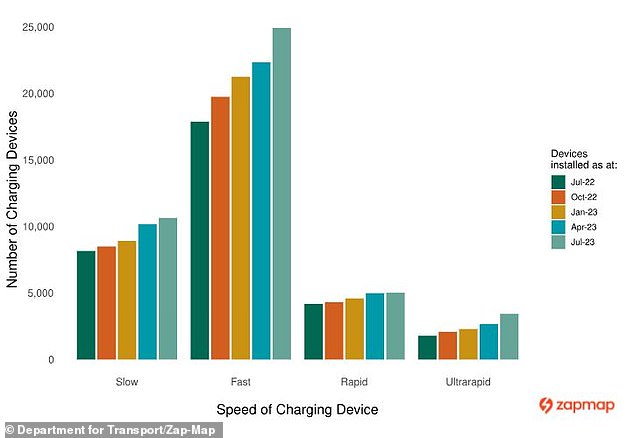
Official government figures show that there are fewer fast and ultra-fast chargers in Britain than slower devices
| Local authority | Number of fast EV chargers | Total number of EV chargers | % fast chargers of the total number of EV chargers |
|---|---|---|---|
| Harlow | 0 | 23 | 0 |
| Kensington and Chelsea | 5 | 696 | 0.7 |
| Southwark | 25 | 1,726 | 1.4 |
| Brent | 20 | 814 | 2.5 |
| Ribble Valley | 1 | 38 | 2.6 |
| Leicester | 3 | 114 | 2.6 |
| Merton | 18 | 676 | 2.7 |
| Windsor & Maidenhead | 3 | 103 | 2.9 |
| Richmond-upon-Thames | 11 | 344 | 3.2 |
| Bracknell Forest | 2 | 61 | 3.3 |
| Conwy | 2 | 60 | 3.3 |
| Watford | 7 | 209 | 3.3 |
| Source: Source: LeaseLoco analysis of July DfT data | |||
Across all UK local authorities, nearly 50 per cent have fewer than one in four chargers that are fast or ultra-fast.
Of the local authorities with more than 10 public fast charging stations, Thurrock has the highest availability. It is unbelievable that three quarters (75 percent) of the current network consists of fast and ultra-fast devices.
Another 32 local governments offer at least 50 percent fast devices in their EV charging infrastructure.
Across all regions, Wales has made the most progress in expanding its fast-charging network, with installations increasing by 78 per cent over the last 12 months.
London (24 percent) and the North East (25 percent) have made the slowest progress in increasing their fast-charging availability over the past year.
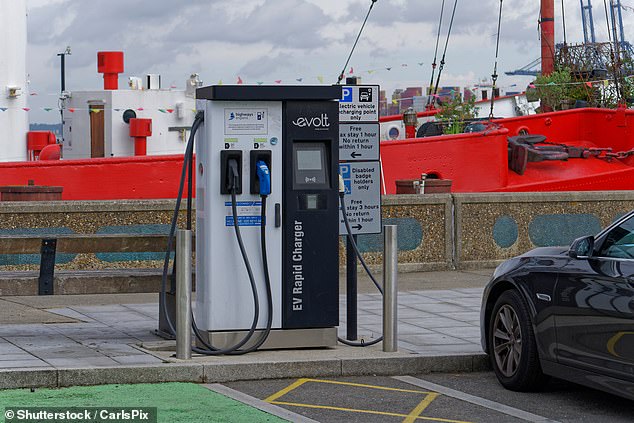
Fast and ultra-fast public chargers have the fastest speeds available on the public network. They can charge an EV’s battery from 20 to 80% in about half an hour
| Region | EV Charging Points – July 2022 | EV Charging Points – July 2023 | EV charging points per 100,000 inhabitants | % increase in charge points |
|---|---|---|---|---|
| North East | 282 | 353 | 13.3 | 25.2 |
| North West | 491 | 773 | 9.9 | 49.3 |
| Yorkshire & Humber | 491 | 697 | 12.7 | 42 |
| East Midlands | 445 | 627 | 12.8 | 40.9 |
| West Midlands | 583 | 874 | 14.7 | 49.9 |
| eastern England | 521 | 736 | 11.6 | 41.3 |
| London | 760 | 943 | 10.7 | 24.1 |
| Southeast | 880 | 1,255 | 13.5 | 42.6 |
| South West | 512 | 756 | 13.2 | 47.7 |
| Wales | 213 | 379 | 12.2 | 77.9 |
| Scotland | 775 | 1,051 | 10.2 | 35.6 |
| Source: Source: LeaseLoco analysis of July DfT data | ||||
John Wilmot, CEO of LeaseLoco, says the uneven proliferation of high-speed devices is evidence why fear of range is no longer the main concern for electric car drivers, giving way to fear of charging.

“The lack of fast chargers in the UK is a real concern for EV owners,” explains John.
“There is a desperate need, especially on highways, for faster charging devices as EV owners face long wait times while charging their car on the road.
‘There seems to be no cohesion when it comes to the rollout of fast chargers. And the disparity across the country between areas when it comes to fast charging is stark.
“The inconsistency of coverage will frustrate drivers who rely on the public charging network.”
Mr Wilmot added that the uneven proliferation of fast devices ‘will make it so difficult for the government to convince the public to switch to electricity early’.
Some links in this article may be affiliate links. If you click on it, we may earn a small commission. That helps us fund This Is Money and keep it free to use. We do not write articles to promote products. We do not allow a commercial relationship to compromise our editorial independence.
